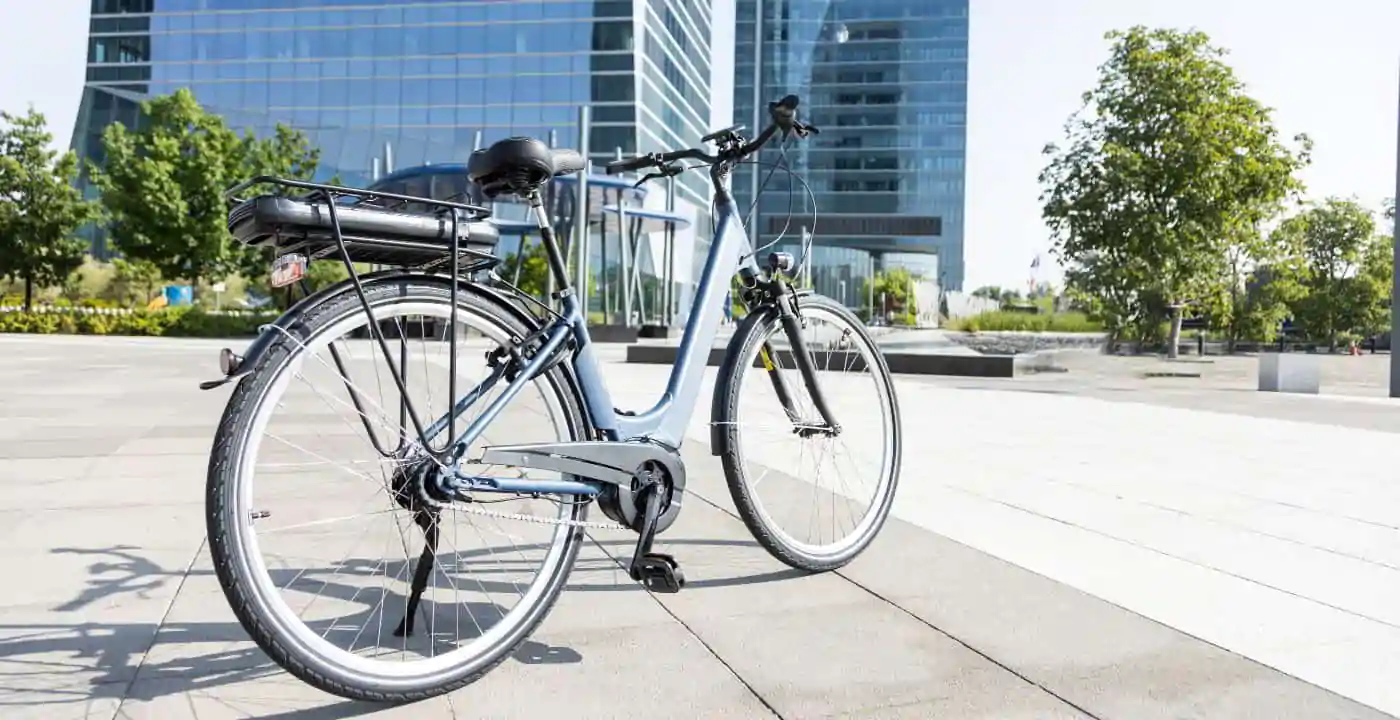Yes, you can ride electric bikes on the road. They are legal in many places and follow specific rules.
Electric bikes are becoming more popular every year. They offer a fun and eco-friendly way to travel. But many people wonder if they can use them on public roads. Understanding the rules for riding electric bikes is important for safety and legality.
Different countries and states have their own regulations. Knowing these can help you enjoy your ride without any trouble. In this blog post, we will explore the key points of Can You Ride Electric Bikes on the Road?.

Credit: lectricebikes.com
Table of Contents
Legal Requirements
Riding an electric bike on the road can be an exhilarating experience. Yet, knowing the legal requirements is crucial. These rules ensure your safety and compliance with local laws. Let’s explore the key aspects.
Licensing
Licensing requirements vary by region. In many places, you don’t need a special license for electric bikes. But some areas may require a regular driver’s license. Always check your local laws to be sure. This ensures you ride legally and safely. Let’s explore the rules.
United States
In the U.S., e-bike laws are state-dependent, though most states follow the three-class system. Under federal law, e-bikes with a top speed of 20 mph (32 km/h) are classified as bicycles and can be ridden on roads without requiring a license or registration.
For Example:
- California: Allows Class 1 and Class 2 e-bikes on most bike paths and roads but restricts Class 3 to roadways only.
- New York: Permits e-bikes in most urban areas but bans them from sidewalks.
- Florida: Classifies e-bikes as bicycles, allowing them on roads, but riders must follow regular traffic laws.
United Kingdom
In the UK, Electrically Assisted Pedal Cycles (EAPCs) are legal on roads and cycle paths if they meet the following criteria:
- The motor must not exceed 250W
- The bike must not assist beyond 15.5 mph (25 km/h)
- The rider must be at least 14 years old
If an e-bike exceeds these specifications, it is classified as a motor vehicle, requiring registration and a license.
European Union
Most EU countries follow similar rules to the UK. The EN15194 standard governs e-bikes, allowing models with a 250W motor and a top speed of 25 km/h on roads without registration. However, in countries like Germany and Switzerland, higher-powered e-bikes require a license.
Australia & Canada
- Australia: Legalizes e-bikes up to 250W and 25 km/h for road use, with additional state-specific rules.
- Canada: Each province has its own e-bike regulations, but in general, bikes under 500W and 32 km/h are street-legal. Some areas, like British Columbia and Ontario, restrict e-bikes from sidewalks and specific bike paths.
Age Restrictions
Age restrictions are also important. Many regions set a minimum age for riding electric bikes. Usually, the minimum age is 16 years old. Some places may have different age limits. Always verify the rules in your area. This helps avoid fines and ensures young riders are safe.
Road Regulations
Riding electric bikes on the road is becoming increasingly popular. But knowing the road regulations is crucial to ensure safety and compliance. Different regions have specific rules. Understanding these can help you ride confidently and legally.
Speed Limits
Electric bikes usually have speed limits set by local laws. In many places, the maximum speed for an electric bike is 20 mph. Exceeding this speed can lead to fines or other penalties. Always check your local speed limits before riding. This helps keep you and others safe.
Bike Lanes
Many cities provide bike lanes for cyclists, including electric bike riders. Using these lanes can make your ride safer and more enjoyable. Some areas have dedicated lanes for electric bikes. Check local regulations to see where you can ride. Always stay in designated lanes to avoid accidents.
Safety Measures
Riding an electric bike on the road can be a fun experience. Yet, safety should always be a priority. Taking the right precautions helps ensure a smooth and secure ride. Below, we discuss important safety measures to keep in mind.
Helmet Laws
Wearing a helmet can save your life. Helmet laws vary by region. Some areas require helmets for all riders. Others only for certain age groups. Check local regulations before heading out. Even if it’s not mandatory, wearing a helmet is always a wise choice.
Reflective Gear
Visibility is crucial when riding on the road. Reflective gear makes you more visible to drivers. Wear a reflective vest or jacket. Attach reflective stickers to your bike. Use lights on both the front and back of your bike. These steps can prevent accidents, especially at night or in low-light conditions.

Credit: emountainbikekings.com
Types Of Electric Bikes
Electric bikes, also known as e-bikes, are a popular choice for riders. They offer a blend of manual pedaling and electric assistance. But did you know there are different types of electric bikes? Understanding these types can help you choose the right one for your needs. Let’s discover the three main classes of electric bikes.
Class 1
Class 1 e-bikes are the most common type. These bikes provide pedal-assist only. That means the motor kicks in when you start pedaling. The motor stops helping you when you reach 20 mph (32 km/h). Class 1 e-bikes are allowed on most bike paths and trails. They’re ideal for commuting and recreational rides.
Class 2
Class 2 e-bikes have a throttle. You can ride without pedaling by using the throttle. The motor will stop assisting at 20 mph. These bikes are versatile and can handle different terrains. Class 2 e-bikes are great for city rides and off-road adventures. They offer flexibility for riders who want extra help on tough sections.
Class 3
Class 3 e-bikes are the fastest type. These bikes provide pedal-assist up to 28 mph. They are often called “speed pedelecs.” Class 3 e-bikes are suited for experienced riders. They are perfect for long commutes and fast rides. Note that some areas have restrictions on Class 3 e-bikes. Always check local regulations before riding.
| Class | Motor Assistance Type | Max Speed | Best For |
|---|---|---|---|
| Class 1 | Pedal-assist only | 20 mph (32 km/h) | Commuting, recreational rides |
| Class 2 | Pedal-assist and throttle | 20 mph (32 km/h) | City rides, off-road adventures |
| Class 3 | Pedal-assist only | 28 mph (45 km/h) | Long commutes, fast rides |
These classifications play a significant role in where you can legally ride. For example, in many U.S. states, Class 1 and Class 2 e-bikes are treated similarly to traditional bicycles and can be ridden on roads, bike lanes, and shared-use paths. Class 3 e-bikes, however, may be restricted from certain bike paths due to their higher speed.
Insurance And Registration
Riding electric bikes on the road is fun and eco-friendly. But, it’s important to know the rules about insurance and registration. This helps you stay safe and legal.
Insurance Needs
Do you need insurance for an electric bike? It depends on your location. Some places don’t require it, but others do. Check local laws to be sure. Even if it’s not required, insurance is a good idea. It can protect you if there’s an accident. Look for policies that cover theft, damage, and liability. This gives you peace of mind while riding.
Registration Process
Do you need to register your electric bike? Again, it depends on where you live. In some areas, registration is necessary. You may need to register if your bike goes over a certain speed. Check with local authorities to find out. The process is usually simple. Fill out a form, pay a fee, and get a registration sticker. This shows your bike is legal on the road.

Credit: macfoxbike.com
Environmental Impact
Electric bikes are gaining popularity for their benefits to the environment. They offer a green alternative to traditional transportation. Let’s explore the environmental impact of using electric bikes on the road.
Emission Reduction
Electric bikes produce no direct emissions. Unlike cars, they do not burn fossil fuels. This reduces the amount of harmful gases released into the air.
- Zero tailpipe emissions
- Less air pollution
- Improved urban air quality
Using electric bikes can lower carbon footprint. This helps in the fight against climate change.
Energy Efficiency
Electric bikes are more energy-efficient than cars. They use less energy to travel the same distance.
| Mode of Transport | Energy Use (Wh per km) |
|---|---|
| Electric Bike | 15 |
| Car | 240 |
This table shows the energy use of electric bikes and cars. You can see electric bikes use much less energy.
Electric bikes also use renewable energy sources. Solar and wind power can charge their batteries.
- Lower energy consumption
- Potential for renewable energy use
- Reduced reliance on fossil fuels
Choosing electric bikes helps conserve energy. It also supports sustainable living.
Benifits Of Riding E-bikes On The Road
Riding electric bikes on the road offers many advantages. These benefits make e-bikes a great choice for commuting, exercise, and everyday travel. Here are some key advantages of riding electric bikes.
Health Benefits
Electric bikes provide a good workout. They help improve cardiovascular health. Riding e-bikes strengthens muscles and boosts stamina. It is also a low-impact exercise. This makes it suitable for all ages and fitness levels. Regular use can help reduce stress. It promotes mental well-being.
Cost Savings
Electric bikes are cheaper to run than cars. They require less maintenance. You save money on fuel costs. Charging an e-bike is much cheaper than filling up a gas tank. Electric bikes also have lower repair costs. They do not require expensive parts like cars. Insurance for e-bikes is also cheaper. Overall, e-bikes can save you a lot of money.
Common Misconceptions
There are many misconceptions about riding electric bikes on the road. These myths often deter people from enjoying e-bikes. This section clears up some common misunderstandings.
Speed Myths
Many believe electric bikes go too fast for the road. This is not true. Most e-bikes have speed limits set by law. In many places, e-bikes cannot go faster than 20 mph. This makes them safe and manageable.
Some think e-bikes are too slow compared to cars. But this is also wrong. E-bikes can maintain a steady speed in traffic. They often reach destinations quicker in busy cities.
Safety Concerns
Some worry that electric bikes are unsafe. They fear accidents and injuries. But e-bikes are designed with safety in mind. They have features like lights, bells, and reflectors. Riders can also wear helmets for extra protection.
Another concern is sharing the road with cars. Many think it’s dangerous. But e-bikes can use bike lanes and paths. This keeps riders away from heavy traffic. Laws and rules help ensure everyone stays safe.
Frequently Asked Questions
Can You Ride Electric Bikes On Sidewalks?
No, electric bikes are generally not allowed on sidewalks. They should be ridden on roads or bike lanes. Always check local laws.
Do You Need A License To Ride An E-bike?
In most areas, you don’t need a license to ride an e-bike. However, it’s important to check local regulations.
What Are The Speed Limits For E-bikes?
Speed limits for e-bikes vary by region. Typically, they are limited to 20-28 mph. Always follow local speed regulations.
Are Helmets Required For Electric Bike Riders?
Helmet requirements vary by location. It’s always a good idea to wear one for safety, regardless of the law.
Conclusion
Riding electric bikes on the road is both convenient and eco-friendly. Laws vary, so always check local regulations. Safety gear, like helmets, is crucial. Electric bikes offer a great way to commute and stay active. Enjoy the ride while reducing your carbon footprint.
Easy to use and fun, they are a smart choice. Embrace this modern transportation method. Stay safe and informed.

